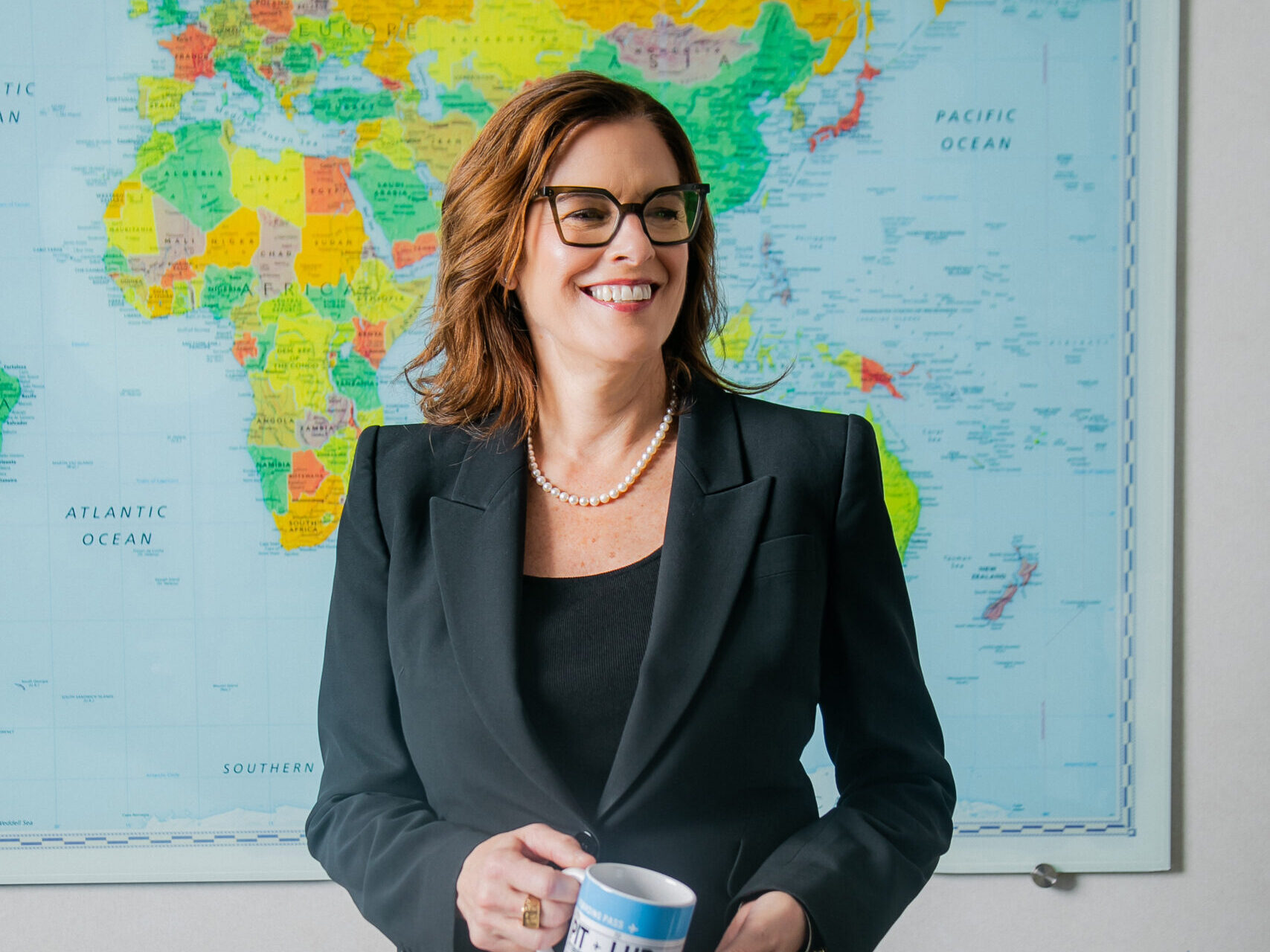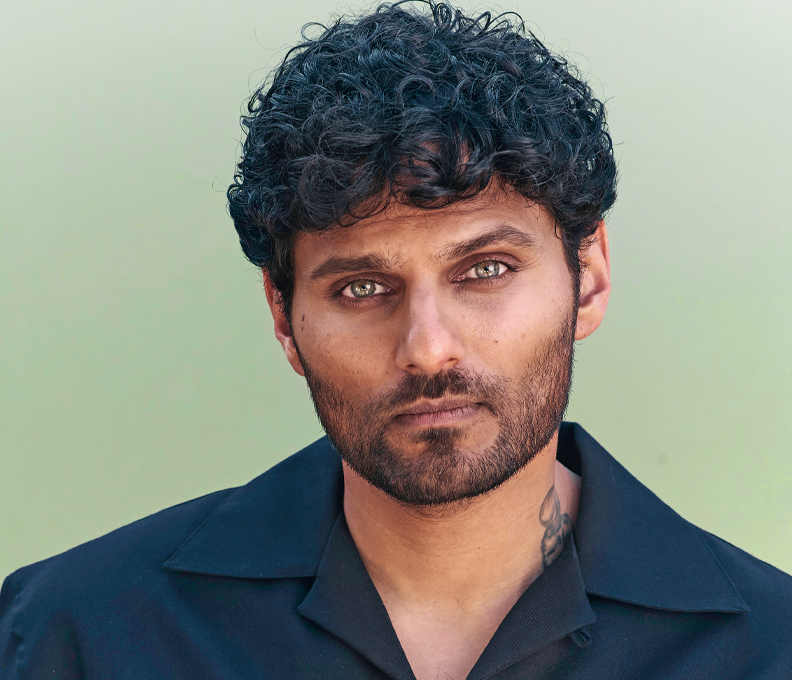How Women Are Rising to Leadership in Commercial Aviation
How international airlines and initiatives are helping women in aviation to soar
by Jaclyn Trop
February 28, 2025
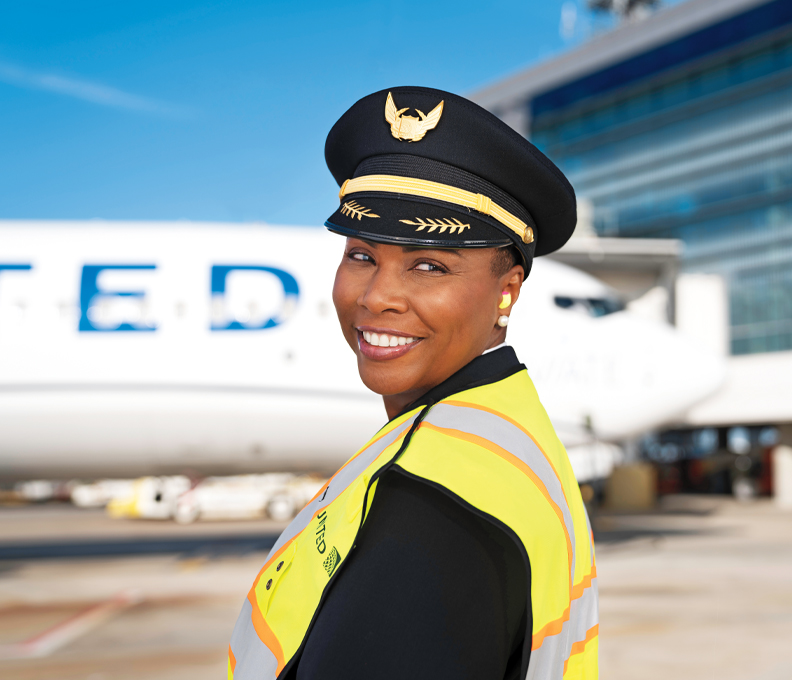
Captain Gabrielle Harding, United Airlines / Photo: Courtesy of United Airlines
I try to invite as many females into the flight deck as possible,” says Gabrielle Harding, a Boeing 737 captain and line-check pilot for United Airlines based in Newark, New Jersey. “I’ve had little girls come up to me and say, ‘I didn’t think that I could do it, but now that I see you here, I want to be a pilot.’”
Women have long been visible in the aisles of commercial aircraft—comprising nearly 80 percent of flight attendants—but the numbers nosedive when it comes to the cockpit or C-suite.
That’s beginning to change, with female CEOs now leading major carriers including Air France, KLM Royal Dutch Airlines, JetBlue, Japan Airlines, Qantas, Aer Lingus, Austrian Airlines, Brussels Airlines, Virgin Australia and RwandAir. Their example illustrates a viable career path for girls interested in commercial aviation, while the initiatives they’re implementing are helping to promote gender parity by bringing more women into the fold.
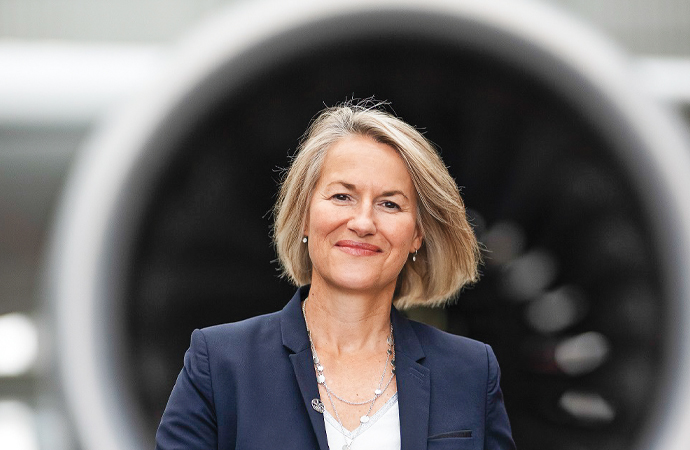
Anne Rigail, CEO at Air France / Photo: Courtesy of Air France
Still, there is a long way to go. Women remain vastly underrepresented in commercial aviation’s leadership ranks, holding just 14 percent of senior executive roles, with only six percent of chief executive and chief operating officer roles filled by women, according to IATA data.
The numbers are equally dismal in the cockpit. Today, only eight percent of commercial airline pilots in the U.S. are women, according to the Bureau of Labor Statistics. A Women in Aviation Advisory Board report puts the percentage of female captains such as Harding at just 3.6 percent.

Photo: Courtesy of KLM
It’s not hard to understand why women are less likely to pursue a career in commercial aviation. Entering a male-dominated industry comes with systemic challenges. Harding, the first Black female line-check pilot on United’s Boeing fleet, was the only female student in her flight education program at Hampton University and, since joining the workforce, has often been the only woman in the room.
“For the 33 years I’ve been flying, I have heard the phrase, ‘You can’t do this,’ quite a few times,” she says. “What I’ve learned is a lot of times you just have to ask a different person in a different way. Then, eventually, you get what you want.”
Many Paths
The fact that there is not just one track to the C-suite serves to strengthen the pipeline of future female leaders. Today’s executives demonstrate a variety of paths to the top.
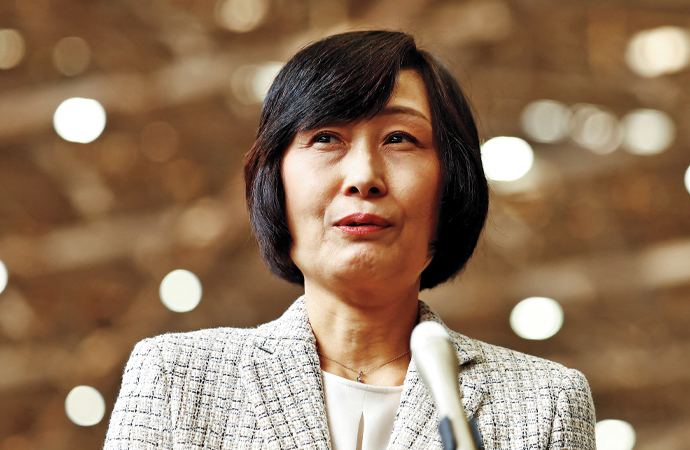
Mitsuko Tottori, CEO at JAL / Photo: Courtesy of Issei Kato:Reuters:Redux
Japan Airlines president Mitsuko Tottori began her career as a flight attendant before being promoted to director of cabin crew. From there, she ascended the corporate ladder to become CEO. Marjan Rintel, president and CEO of KLM Royal Dutch Airlines, the world’s oldest carrier, held several roles at Amsterdam’s Schiphol Airport and the state-owned railway operator Nederlandse Spoorwegen before becoming the airline’s first female chief executive.
Yvonne Makolo, CEO of RwandAir, previously worked as an IT specialist before joining the airline. Notably, she is also the first woman to lead IATA, the Montreal-based trade association for the world’s airlines.
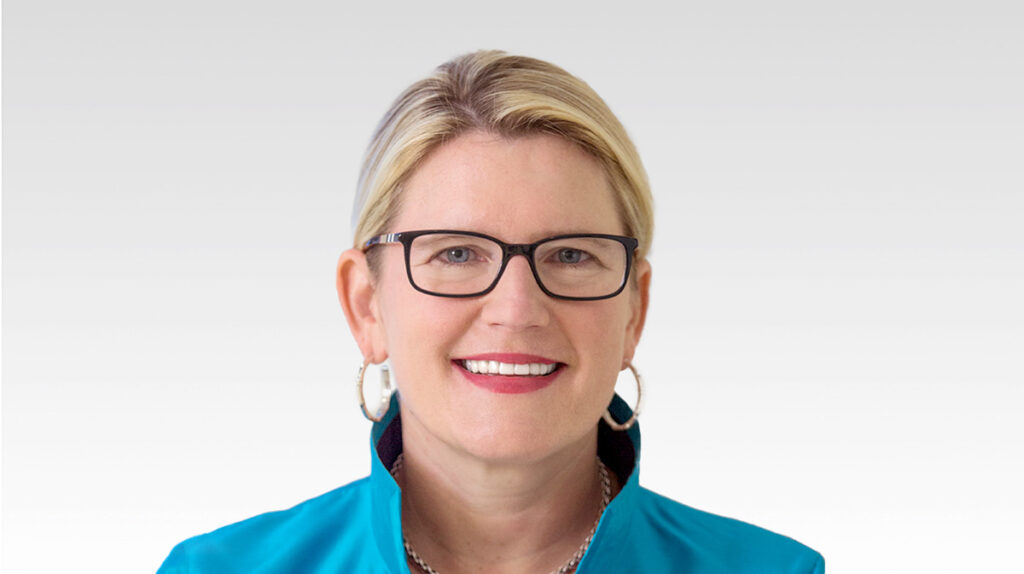
Photo: Courtesy of JetBlue
JetBlue CEO, Joanna Geraghty, the first woman to lead a major U.S. airline, entered the aviation industry after working as a corporate attorney representing airlines and aircraft manufacturers. She became JetBlue’s director of litigation and regulatory affairs in 2005 and served as chief people officer, chief operating officer and executive vice president for customer experience before becoming the airline’s chief executive in 2024.
The lack of women in leadership roles “is a complex issue that starts with early education,” says Evgenia Starkova, head of marketing and sustainability for SkyTeam. “We won’t fix it in one generation.” Starkova joined the industry in 2023 following a career in financial technology. Her work helping partners such as Delta, Air France and Korean Air scale their sustainability initiatives “is a beautiful space where aviation meets diplomacy,” she says.
New Initiatives
Under Makolo, IATA is spearheading an initiative to encourage airlines to grow female senior leadership positions to at least 25 percent of the corporate structure by the end of this year. The 25by2025 initiative has attracted more than 200 airlines and aviation-related organizations, including American, Delta, Hawaiian, JetBlue and United.
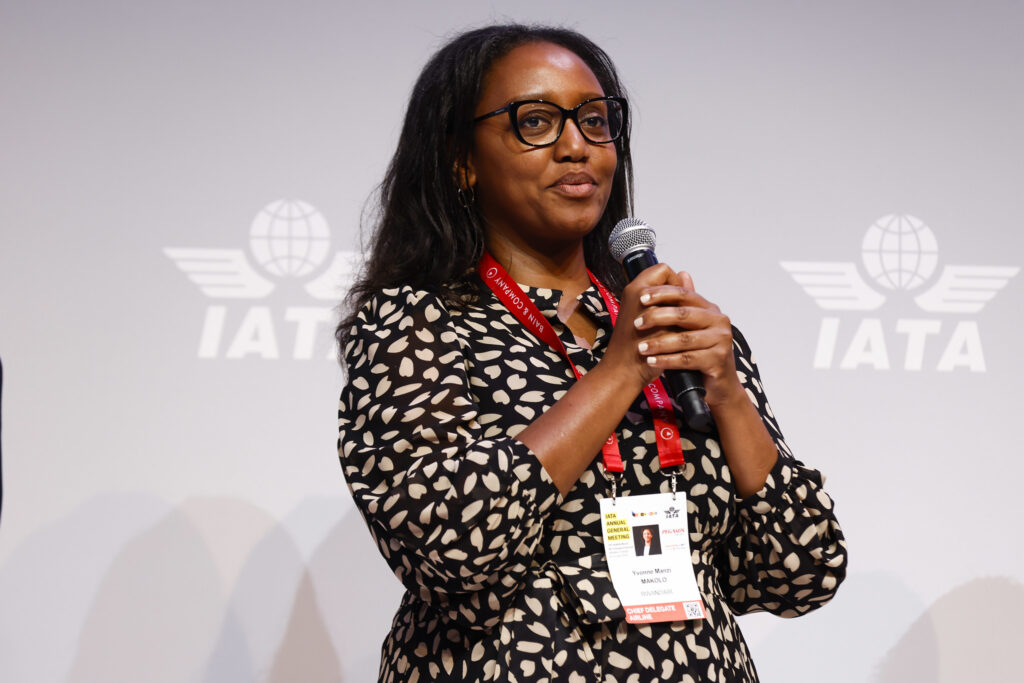
Photo: Yvonne Makolo. Courtesy of IATA
So far, IATA reports that the number of women in senior leadership roles at participating airlines has increased from 19 percent to 28 percent. Those airlines have also increased the number of female pilots by 1,000.
SkyTeam has kicked off an initiative called RISE, which focuses on increasing the number of women in leadership roles at its partner airlines. Starkova says the program trains women in soft skills and points out possible paths for development. Air France CEO Anne Rigail aims for half of all senior management positions at the SkyTeam partner to be occupied by women.
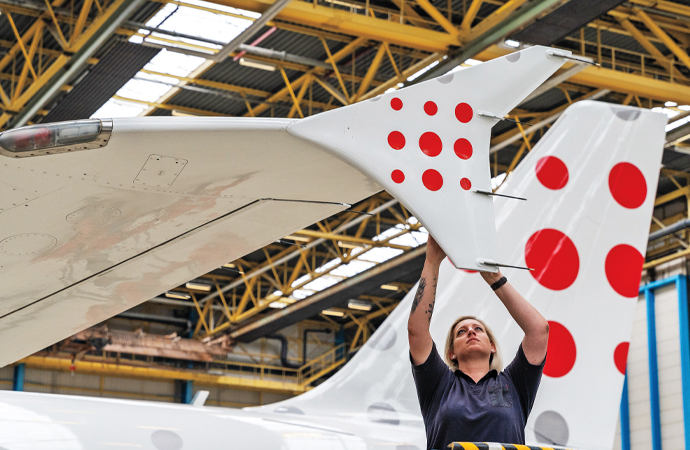
An aircraft mechanic working on a Brussels Airlines Airbus A320 / Photo: Courtesy of Brussels Airlines
Role Models
Efforts to increase the ranks of women in commercial aviation start at the ground level, with early education. It’s important for girls studying STEM subjects and young women beginning their careers in aviation to have female role models at the top.
Several organizations exist to mentor and encourage girls and women who aspire to fly commercial jets or lead airlines. “Role models are vital,” Starkova says. “They normalize what may otherwise seem out of reach.”
With more than 20,000 members in 120 countries, Women in Aviation International is dedicated to increasing the number of women in the aviation and aerospace industries, from pilots, mechanics and technicians to air traffic controllers, baggage handlers and ramp agents. The number of women involved in the industry has steadily increased since the organization’s founding in 1994.
Their relatively small numbers belie the fact that women have been piloting planes since the industry’s inception. The Ninety-Nines, one of the longest standing networks for female pilots named for its 99 charter members, was founded in 1929 at Curtiss Field on Long Island, New York, to serve as a support network for women in aviation. Amelia Earhart was elected as the group’s first president.
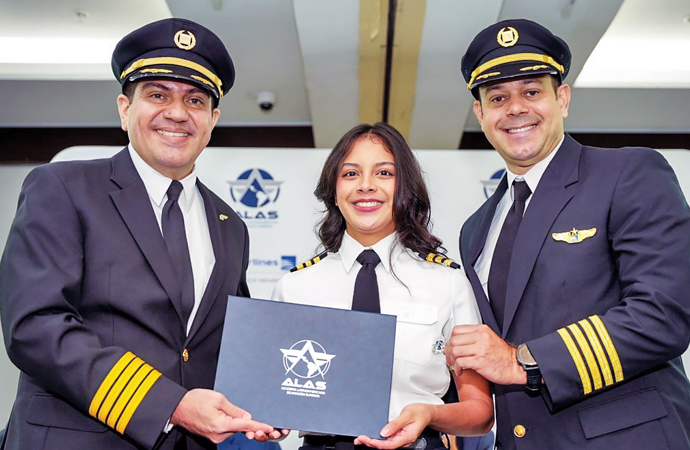
A pilot cadet graduating from Copa’s academy in January / Photo: Courtesy of Copa Airlines
Sisters of the Skies provides mentorship and scholarship opportunities for aspiring Black female pilots. “They’re able to talk to each other and get references and information,” Harding says. “It’s really nice to watch the next generation come through.”
Meanwhile, the airlines themselves have begun establishing feeder programs for future pilots. Founded in 2021, United’s Aviate pilot development program aims to train and hire more than 10,000 pilots over the next decade at the airline’s flight school in Denver—an excellent opportunity for young aspiring women to enter the industry with adequate preparation and training.
“The value of a role model goes beyond inspiration,” says Katherine Katsudas, a senior manager at Copa Airlines, Panama’s national carrier. “It’s about paving the way for future generations.”

Photo: Courtesy of Captain Angelica Quintero
Roughly 11 percent of Copa’s pilots are female. The Star Alliance partner aims to increase the ratio by providing full scholarships for students to attend the Academy of Aeronautical Technicians for aspiring aircraft mechanics, and partial scholarships for its Latin American Academy of Superior Aviation for pilots—a field where women are chronically underrepresented. The students are guaranteed a job with the airline once they graduate.
“Witnessing firsthand the increasing participation of women in our training academies for maintenance technicians and pilots fills me with pride,” Katsudas says. It’s no secret that everyone benefits when women succeed in business. Research shows that diverse leadership teams make better, more informed decisions and reap greater profit.
“Achieving real progress is not just about women,” Katsudas adds. “It’s about all of us, working together to do what needs to be done. By fostering collaboration, we can create and sustain equal opportunities for everyone.”

